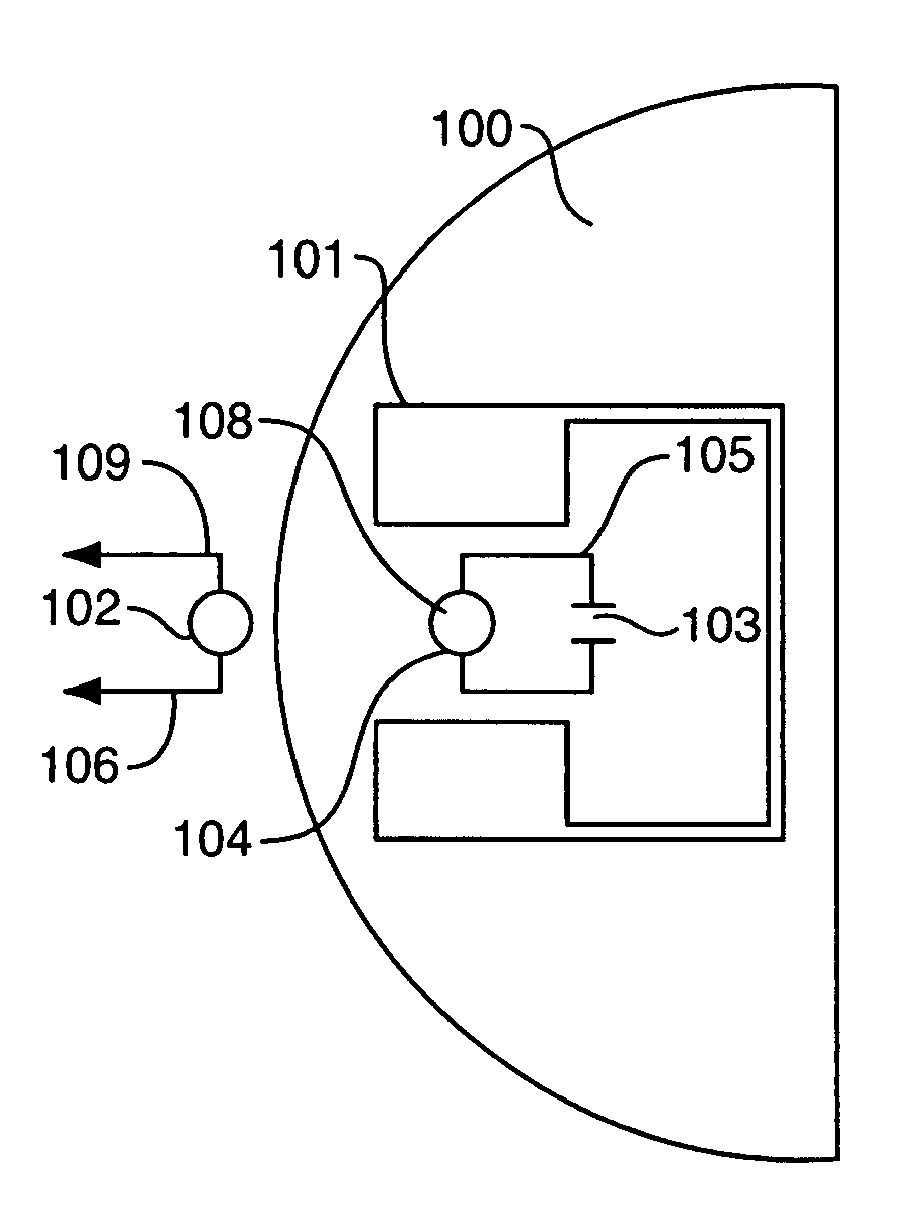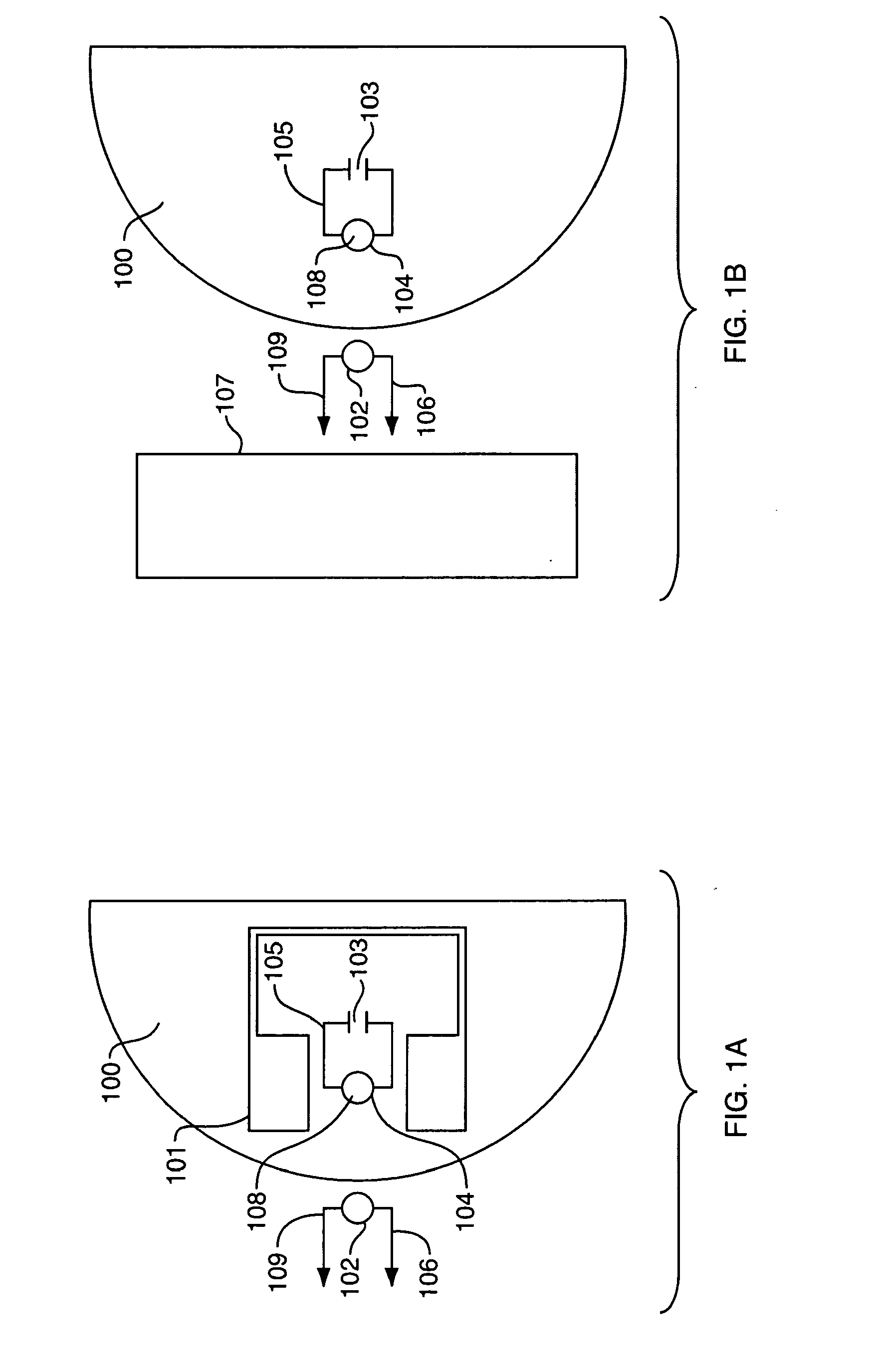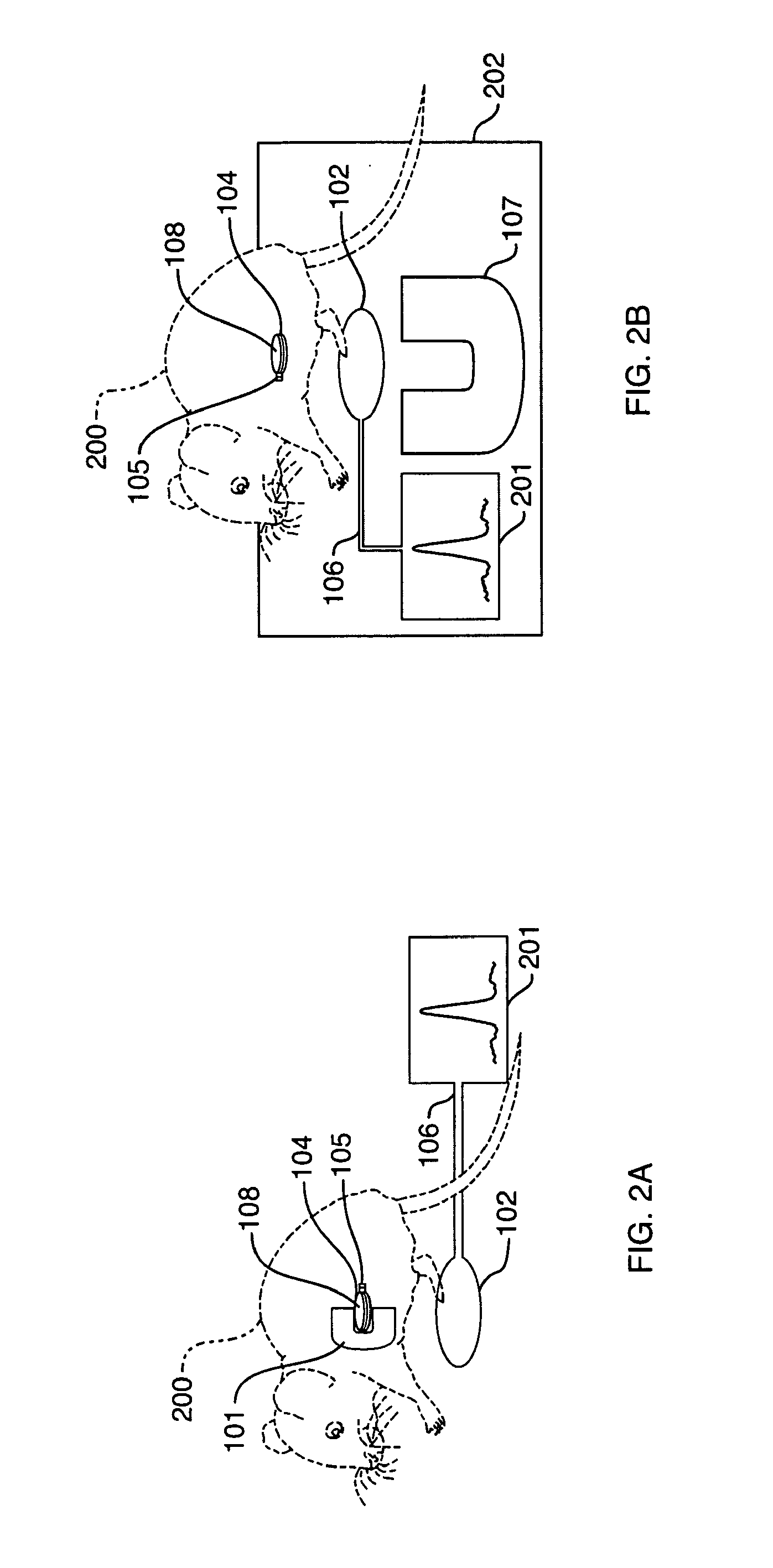Magnetic resonance system with implantable components and methods of use thereof
a magnetic resonance and component technology, applied in the field of magnetic resonance system with implantable components, can solve the problems of inability to perform the diversity of assays at high sensitivity, large and/or expensive magnets known to satisfy such requirements, and inability to adapt to portable devices and/or implantation devices
- Summary
- Abstract
- Description
- Claims
- Application Information
AI Technical Summary
Benefits of technology
Problems solved by technology
Method used
Image
Examples
Embodiment Construction
[0023]One aspect of the present invention is an implantable device for in vivo Magnetic Resonance (MR) sensing. It allows measuring MR signals from a selected volume inside the body of an animal. Sensing is performed by using an apparatus configuration where components of a device include a resonant radio-frequency (RF) circuit (see FIG. 1-A) or a resonant RF circuit and a small magnet (see FIG. 1-B) implanted in the body of a subject (e.g., an animal), wherein an RF spectrometer is not included in the implantable components. A static magnetic field needed for an MR sensing method is generated by either a small implanted permanent magnet (e.g., a magnet implanted in the proximity of or around an implanted RF coil) (FIG. A), or by an external magnet (FIG. B). An external magnet, e.g., a portable open permanent magnet, can be placed at an external location of a subject close to the location of an implanted device for generation of a magnetic field. An implanted RF coil, when part of a...
PUM
 Login to View More
Login to View More Abstract
Description
Claims
Application Information
 Login to View More
Login to View More - R&D
- Intellectual Property
- Life Sciences
- Materials
- Tech Scout
- Unparalleled Data Quality
- Higher Quality Content
- 60% Fewer Hallucinations
Browse by: Latest US Patents, China's latest patents, Technical Efficacy Thesaurus, Application Domain, Technology Topic, Popular Technical Reports.
© 2025 PatSnap. All rights reserved.Legal|Privacy policy|Modern Slavery Act Transparency Statement|Sitemap|About US| Contact US: help@patsnap.com



